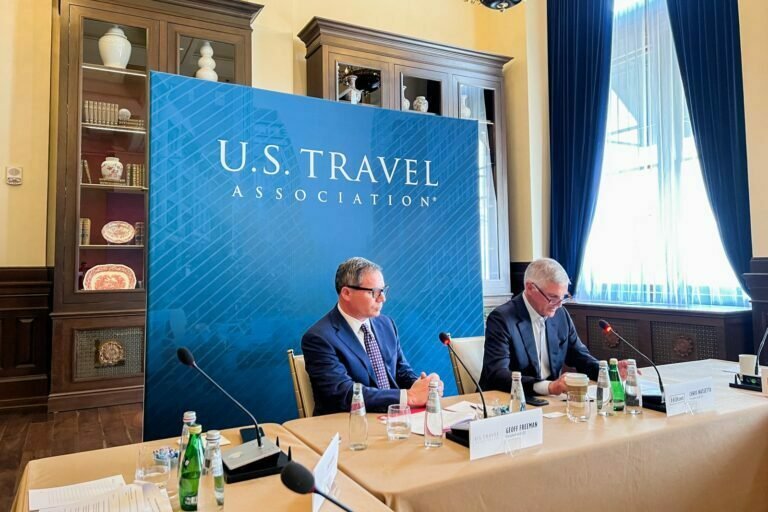Traveling is always a big headache – especially when people stay at home.
We have airport delays, difficult security lines, unpredictable and – for non-US citizens – often paralyzing waits to get visas to enter the country.
All these problems are hurting our economy and need to be fixed now.
That was the message Wednesday afternoon from Geoff Freeman, president and CEO of the US Travel Association, and Chris Nassetta, CEO of Hilton Hotels & Resorts and the incoming chairman of the travel trade group.
Related: The 40 most exciting new hotel openings
It’s a familiar theme among travel leaders: The industry creates jobs and tax revenue, they say, but the government isn’t doing enough to make the move as easy and smooth as possible.
There are no simple solutions.
Creating a long-term funding plan for the Federal Aviation Administration has been discussed for more than a decade. Without it, air traffic control systems cannot be changed.
Streamlining airport security and reducing immigration lines involves two different branches of the Department of Homeland Security – the Transportation and Security Administration for the first and Customs and Border Protection for the second. And both agencies have the goal of protecting the country, not necessarily acting on more people as quickly as possible.
Sign up for our daily newsletter
Industry leaders are aware of these obstacles but have a clear message: “The recovery of travel is the recovery of the country.”
Leaders are excited about several opportunities this year including the enactment of the 2022 Bipartisan Infrastructure Act to improve the passenger experience and airport infrastructure.
The recent nationwide shutdown of the FAA’s air traffic control systems has helped highlight how urgent the need is for proper, long-term government funding.
Passing the buck on our transit infrastructure is “unacceptable,” Freeman added. “There are consequences for not making decisions.”
They are hopeful that with the addition of American Airlines, Delta Air Lines and United Airlines to their trade and lobbying group, more progress will be made in all sectors.
“We’ve never seen that partnership before,” Freeman said. “Where we’ve engaged as an industry, we’ve seen results.”
Hilton’s Nassetta said the industry has improved since the pandemic but still has a ways to go. (The event was held at his company’s Waldorf Astoria Washington DC – formerly the Trump Hotel, once owned by the former president.)
Nassetta then released the statistics:
- The travel industry represents 12 million jobs in 2021, up from 17 million in 2019.
- Travel spending accounted for about 1.5% of America’s gross domestic product last year, up from 3% of GDP in 2019.
He notes what all the CEOs have been saying for the past few years: Leisure travel is booming.
“People have a burning desire to want to get out and live their lives given the experience of COVID,” Nassetta said.
Then, identifying the headwinds very bluntly, he added that business travel is mixed. Small and medium companies are returning, but large corporations are more restricted in their travel, he said. There are more regional, drive-to gatherings but not as many large, fly-to events.
At the same time, the government needs to make it easier for foreigners to visit.
Currently, 43% of travelers to the US are required to obtain a visa interview before coming here.
Freeman noted some extreme wait times at US consulates abroad:
- 616 days in India.
- 455 days in Brazil.
- 549 days in Mexico.
- 872 days in Columbia.
“This is a de facto travel ban,” he said.
“We told them that their money, their time is not needed here,” added Freeman. “Many of the travelers, as you can imagine, never do. They choose other markets. They choose places that want their business.”
“If we look at the Obama administration’s success in reducing wait times, it started by setting a goal of 21 days,” Freeman continued. “With that goal, they found a way to find out. They took all the consulates up to less than 14 days for an interview. We believe that the same can be done here, but it takes same leadership to get there.
Of course, a big part of that is China, which had 3 million annual visitors to the US before the pandemic. That is the third largest group in terms of the number of people but – and this is the key – with $ 15 billion in spending, is the leading country for financial impact.
Freeman asked: “What is our plan to bring back the travelers?”
Related reading:
